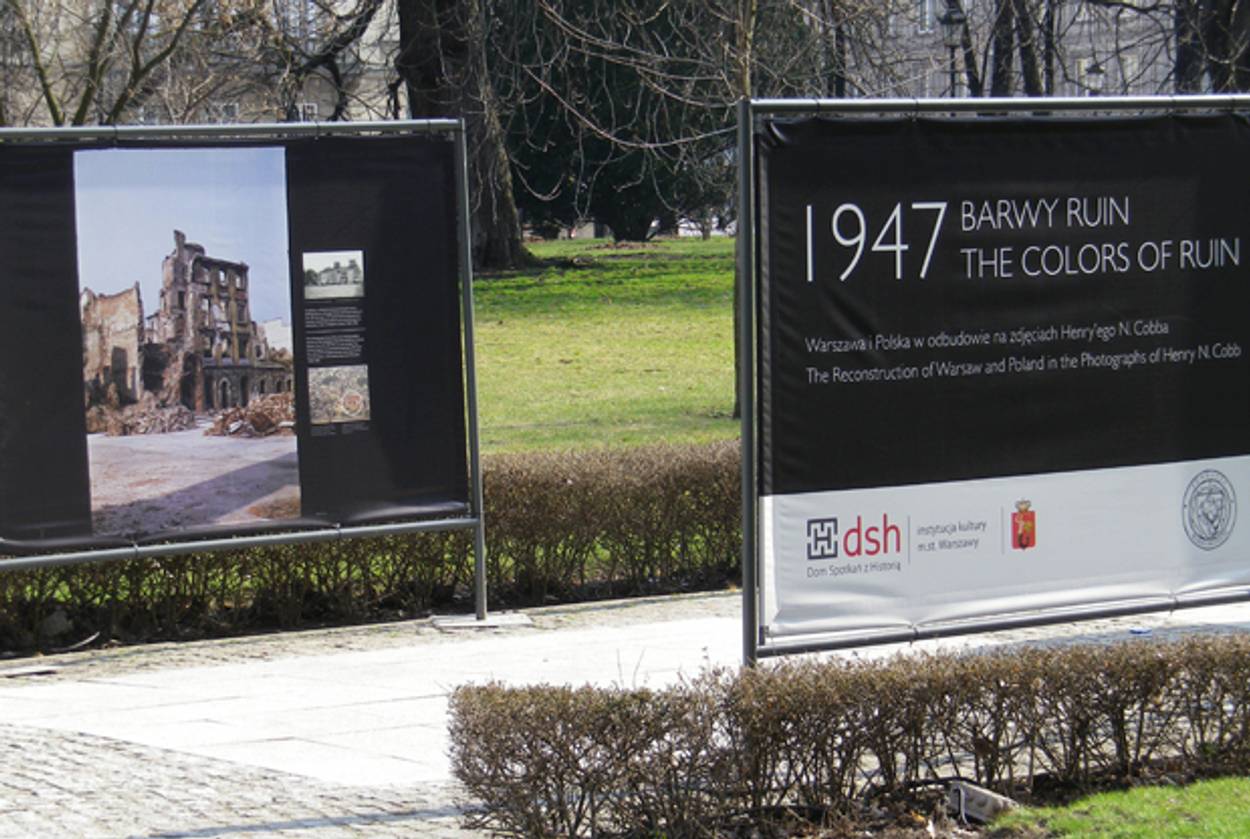Stumbling on History
Finding answers on a first walk through Warsaw




On a special pre-opening tour of the Museum of the History of Polish Jews yesterday, I found myself wondering how much of the Warsaw Ghetto was still standing after the war. Today, I stumbled on a photography exhibit that offered up the answer: none of it.
This afternoon, I took a walk with my husband to see some of the city’s prettier sights—and to sample some pierogi. Our stroll down Krakowskie Przekmiescie, one of the Polish capital’s more upscale boulevards, led us past a string of international boutiques and trendy chain stores (and not one but two Starbucks) before opening into the stately historic district, Stare Miasto. But the most interesting thing we saw on this grand street was perhaps the least imposing: a modest outdoor exhibit in Father Jan Twardowski Square.
Organized by the History Meeting House, which is located alongside the square, “The Colors of Ruin” features a set of blown-up color photographs of taken in 1947, when most of Warsaw lay in ruins. They were shot by Henry N. Cobb, who came to Warsaw with a group of North American architects trying to help plan the city’s reconstruction. It’s an amazing collection of images, mostly forgotten until a couple years ago—and never put on public display until now; the images from 1947 are accompanied by older historic photos from other sources showing what the areas looked like before World War II, and by small present-day photos, as well as brief commentary in Polish and English. Among the more astonishing shots is one from the rubble (no buildings, no recognizable ruins, no streets, nothing but rubble) of the Warsaw Ghetto, including the spot where the Monument to the Ghetto Heroes would be erected in 1948, and where the new museum is now set to open to the public this week.
Inside, another photo exhibit, “Behind the Wall,” documents the construction of the ghetto in 1940, through a series of black-and-white photographs arranged chronologically. Most unusual were two shots of boys selling things inside the ghetto: one, a basket of large pretzels; the other, the armbands with a Star of David that Jews were required to wear.
But it was the outdoor exhibit, those color postwar pictures, that made us pause and think, and return to see the images a second time, looking on the maps to see which of the locations we’d already walked past in our first 24 hours in Warsaw. It will stay on display until May 5.
(Incidentally, for folks wondering about those pierogi: boiled, with sour cream, with a variety of fillings—of which the best was cabbage with field mushrooms. Perfection.)
Wayne Hoffman is executive editor of Tablet Magazine.